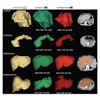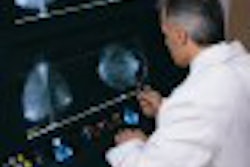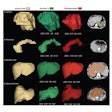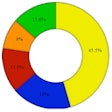Although it lacks the same acumen as double reading by radiologists, computer-aided detection (CAD) can help improve what has been called the "weakest link" in breast cancer screening -- observer errors and errors in interpretation. A group from the University Medical Center Nijmegen in the Netherlands compared the use of a CAD system to independent double reading of masses on mammograms.
"Without considering recorded eye movements, one may define search-and-detection errors as those that occur when a radiologist does not report the presence of a visible lesion and interpretation errors as those that occur when the lesion is reported but not considered actionable. (Previous) review studies have revealed that observer errors are frequent in breast cancer screening," wrote Nico Karssemeijer, Ph.D., and colleagues in an article on Radiology Online. "On the basis of the results of these studies, it is estimated that 20%-30% of cancers could be detected in an earlier screening..." (February 28, 2003).
For this retrospective study, 500 cases (125 positive cases; 125 interval cancers; 250 normal cases) were selected from the Dutch Breast Cancer Screening Program in which all women, ages 50-74, are invited biannually to undergo mammography. Since the program reached full coverage in 1998, the attendance rate has been nearly 80%, the authors said.
Radiographers do the exams in mobile mammography units, obtaining two views, mediolateral oblique and craniocaudal, at initial screening. The images are transferred to reading centers where they are read by radiologists.
The first reader in this study was a single mammographer; a panel of 10 radiologists performed the double-read. The CAD system was version 2 of the ImageChecker M1000 (R2 Technology, Sunnyvale, CA). The images were digitized with the ImageChecker, which was equipped with a Lumisys LS85 film scanner (Eastman Kodak, Rochester, NY).
"For independent interpretation with CAD, the suspicious rating assigned to each finding by the radiologist was weighted with the CAD output at the area of the finding…. By independently combining the findings of the radiologists with the detection results of the CAD program, one can simulate mammogram reading with CAD and investigate the use of CAD markers as a possible way of improving mammogram interpretations," the authors explained.
According to the results, there were 115 cases with visible masses. All radiologists read at a rate of 50 cases per hour, with a total of 3,806 findings reported (average of 0.77 findings per case).
The detection sensitivity of the radiologists ranged from 27%-54%. Independent double reading of the exams led to an increase in mean sensitivity of 49.9% from 39.4%. At a rate of 0.5 false-positive cases per mammogram, the sensitivity of the CAD system was 62% for screening mammograms and 94% for diagnostic mammograms.
"It appears that with the use of CAD, the performance of all the radiologists -- even those who had the best single reading performance in our study -- increased. The mean increase in detection performance was 7.0% (with CAD)...and 10.5% with double-reading."
Although double-reading still yielded the best detection results, the group concluded that the presence of CAD mass markers could improve interpretation. The fine-tuning of CAD technology, as well as radiologists’ familiarity with it, should help to make it a more powerful tool in breast imaging.
By Shalmali PalAuntMinnie.com staff writer
March 7, 2003
Related Reading
R2 inks two deals, February 27, 2003
Researchers compare CAD systems for mammography, December 6, 2002
Mammography screening controversy doesn’t dampen vendor efforts, December 1, 2002
Mammographic patterns point to breast cancer risk, November 7, 2002
Copyright © 2003 AuntMinnie.com
















